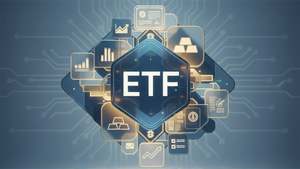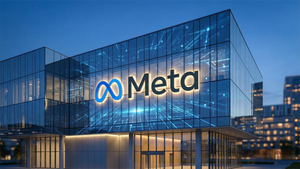
New York, NY – October 10, 2025 – A significant global market sell-off rattled investors today, driven by a confluence of factors including renewed U.S.-China trade tensions, escalating concerns over AI stock valuations, an ongoing U.S. government shutdown, and persistently rising bond yields. As the S&P 500 (INDEXSP:.INX) dipped by 0.8% and the tech-heavy Nasdaq Composite (NASDAQ: .IXIC) shed nearly 2%, a surprising narrative emerged from the Virtual Reality (VR) sector. While the broader technology market faced substantial headwinds, VR stocks demonstrated a segmented performance, with enterprise-focused solutions showing remarkable resilience, partially decoupling from the overall market downturn.
This market correction, reminiscent of past periods of heightened economic uncertainty, saw investors fleeing riskier assets. However, the performance of VR stocks today suggests a growing maturity and differentiation within the immersive technology landscape, indicating that not all growth sectors are equally vulnerable to a "risk-off" sentiment. The day's trading highlighted a clear divergence between speculative consumer-focused VR plays and established companies providing tangible, value-driven enterprise solutions.
Market Turmoil and VR's Nuanced Response
Today's market downturn was a culmination of several macro-economic and geopolitical anxieties. Reports of intensified U.S.-China trade friction fueled fears of disrupted supply chains and reduced global economic activity, directly impacting multinational tech giants. Simultaneously, a U.S. government shutdown added to domestic uncertainty, while continuously rising bond yields made future earnings of growth companies less attractive, putting pressure on their valuations. The specter of an "AI bubble" further exacerbated the sell-off in the technology sector, leading to a broad re-evaluation of high-growth, high-valuation stocks.
Against this backdrop, the VR market, which has seen a "noticeable decline after a period of hype" in consumer hardware sales in late 2024 and early 2025, presented a complex picture. Pure-play consumer VR companies and unprofitable metaverse startups, already struggling with weak sales and reduced venture capital funding, faced intensified pressure, with many seeing significant declines. These firms, often reliant on discretionary consumer spending, were particularly vulnerable as economic uncertainty mounted.
However, a different trend emerged for companies entrenched in enterprise VR. Firms like The Glimpse Group (NASDAQ: VRAR), known for its focus on defense, healthcare, and education solutions, reportedly showed resilience, buoyed by strong fiscal year 2025 revenues and a path toward cash flow neutrality. Similarly, zSpace (NASDAQ: ZSPC), a pioneer in AR/VR for education and workforce development, saw a notable short-term stock surge on October 9, 2025, underscoring the perceived value in specialized, essential enterprise niches. Diversified tech giants such as Apple (NASDAQ: AAPL), Sony (NYSE: SONY), Microsoft (NASDAQ: MSFT), and Meta Platforms (NASDAQ: META), despite their varied exposure to the consumer VR market, leveraged their broader financial strength and diversified revenue streams to weather the storm more effectively.
Winners, Losers, and the Shifting Sands of Immersive Tech
The market sell-off on October 10, 2025, served as a stark differentiator within the VR ecosystem, separating companies with robust, revenue-generating models from those still heavily reliant on future potential and speculative growth.
Potential Losers: Pure-play consumer VR hardware manufacturers and content developers, especially those lacking profitability, bore the brunt of the downturn. Many VR game developers had already reported staff cuts in late 2024 and early 2025 due to weak sales, indicating pre-existing fragility. Unprofitable VR/metaverse startups, heavily dependent on venture capital, found it increasingly difficult to secure funding as cautious investors prioritized stability over speculation. Even Meta Platforms (NASDAQ: META), despite its market leadership in consumer headsets, faced increased scrutiny on its Reality Labs division, which continues to operate at significant losses. The ongoing financial drain from its metaverse ambitions amplified investor concerns during a period of market contraction.
Potential Winners (or more Resilient Performers): Companies providing essential enterprise VR solutions demonstrated greater resilience. The Glimpse Group (NASDAQ: VRAR), with its strong presence in high-growth enterprise sectors, exemplifies this trend. Its focus on predictable revenue streams from business clients seeking efficiency and cost reduction proved to be a defensive advantage. zSpace (NASDAQ: ZSPC), specializing in educational and workforce development VR, also highlighted the enduring demand for immersive training and learning tools, even in a challenging economic climate. Furthermore, diversified tech giants like Apple (NASDAQ: AAPL), with its Vision Pro, and Sony (NYSE: SONY), through its enterprise-focused XYN business segment, showcased their ability to absorb losses from nascent VR ventures due to their established market positions and robust balance sheets. Component suppliers such as Nvidia (NASDAQ: NVDA) and Qualcomm (NASDAQ: QCOM), whose technologies underpin both VR and other booming tech sectors like AI, also showed relative stability due to their diversified revenue streams.
Wider Significance and Industry Realignments
Today's market reaction underscores a significant realignment within the VR industry, accelerating pre-existing trends. The shift from consumer-driven hype to enterprise-driven utility is now undeniable. While consumer VR has faced stagnation, enterprise adoption for training, design, healthcare, and industrial applications continues to accelerate, driven by proven ROI and efficiency gains. The VR education market alone is projected to reach $28.7 billion by 2030, with enterprise users generating over 60% of all VR industry revenues.
This event also highlights the increasing integration of AI within VR. While AI valuation concerns contributed to the broader sell-off, AI itself is seen as a crucial enabler for enhancing VR experiences, from hyper-realistic environments to personalized content. Companies that effectively leverage AI to create more intuitive and valuable VR solutions are better positioned for long-term success. Regulatory concerns, particularly around data privacy (especially "neural privacy" from biometric data), intellectual property, and user safety, continue to loom large. These issues, while not directly causing today's sell-off, contribute to the underlying uncertainty surrounding the metaverse and immersive technologies, demanding robust legislative frameworks to keep pace with rapid innovation. Historically, periods of market consolidation often follow such downturns, potentially leading to stronger, more focused players emerging in the VR space.
What Comes Next for the Immersive Landscape
In the short term, the market sell-off will likely intensify investor scrutiny on profitability and clear business models within the VR sector. Companies with strong balance sheets, diversified revenue streams, and demonstrable value propositions will be favored. We can anticipate a continued pivot towards Mixed Reality (MR), with major players like HTC (TPE: 2498), Meta (NASDAQ: META), and Pico (private) investing heavily in hybrid technologies that blend virtual objects with the real world, addressing the need for environmental awareness and expanding practical applications. Hardware innovations will continue, focusing on lighter, more comfortable, and affordable devices, potentially leading to the launch of Meta Quest 4 and Quest 4S in 2026/2027.
Longer-term, beyond 2025, the VR market is still projected for substantial growth, with some forecasts predicting the combined AR/VR market to exceed USD 500 billion by 2031. Hyper-realistic immersion, enabled by ultra-high-resolution displays and advanced haptic feedback, will become standard. The convergence of VR, AR, and AI will lead to seamless, personalized digital interactions, with lightweight wearable devices potentially replacing smartphones as primary interfaces by the end of the decade. Strategic shifts will emphasize ecosystem development, as seen with Meta's Horizon OS, and regional investment, particularly in the Asia-Pacific market. Opportunities abound in healthcare (surgical simulations, therapy), education, and manufacturing, solidifying VR's role as an essential enterprise tool.
A Resilient Future for Focused VR Investments
Today's market sell-off served as a crucial stress test for the Virtual Reality sector, revealing its inherent segmentation. While speculative consumer-focused ventures faced significant pressure, companies delivering tangible, value-driven enterprise solutions demonstrated remarkable resilience. This event underscores the market's growing discernment, favoring VR players with clear paths to profitability, robust business models, and strategic alignment with real-world needs.
Moving forward, investors should watch for continued advancements in hardware accessibility and user experience, further integration of AI to enhance immersion and functionality, and the evolution of regulatory frameworks to address privacy and safety concerns. The long-term trajectory for VR remains robust, driven by accelerating enterprise adoption and technological convergence. However, the market will likely reward strategic pivots towards mixed reality, strong ecosystem development, and a relentless focus on delivering measurable value, rather than just hype. The future of VR lies not just in its ability to transport users to new worlds, but in its capacity to fundamentally transform how businesses operate and how we interact with information in our daily lives.
This content is intended for informational purposes only and is not financial advice





